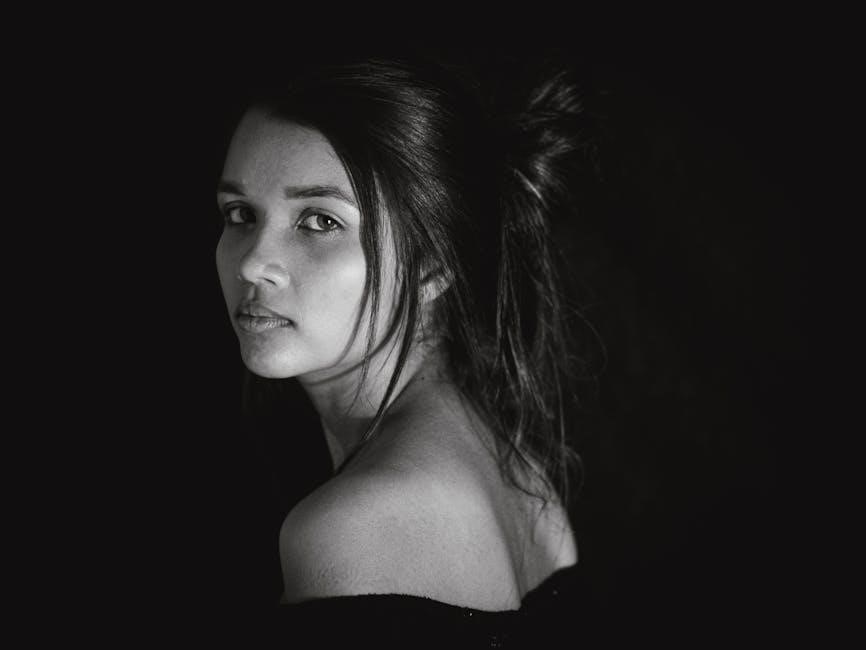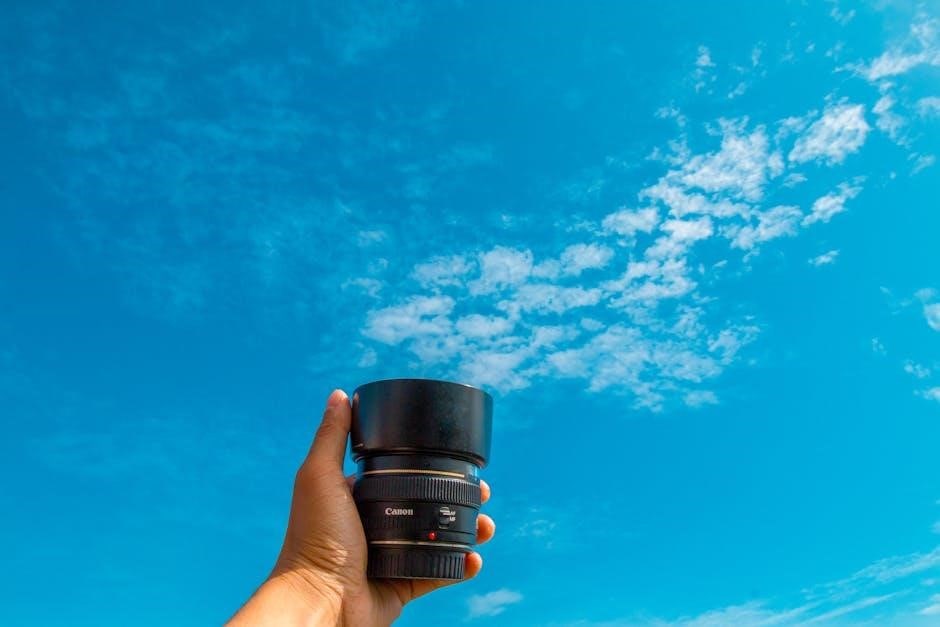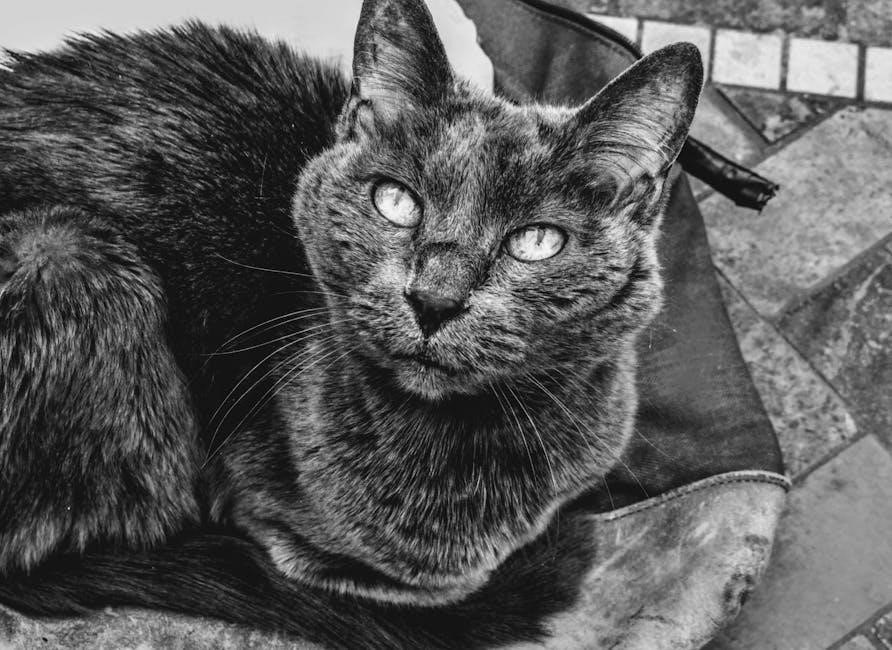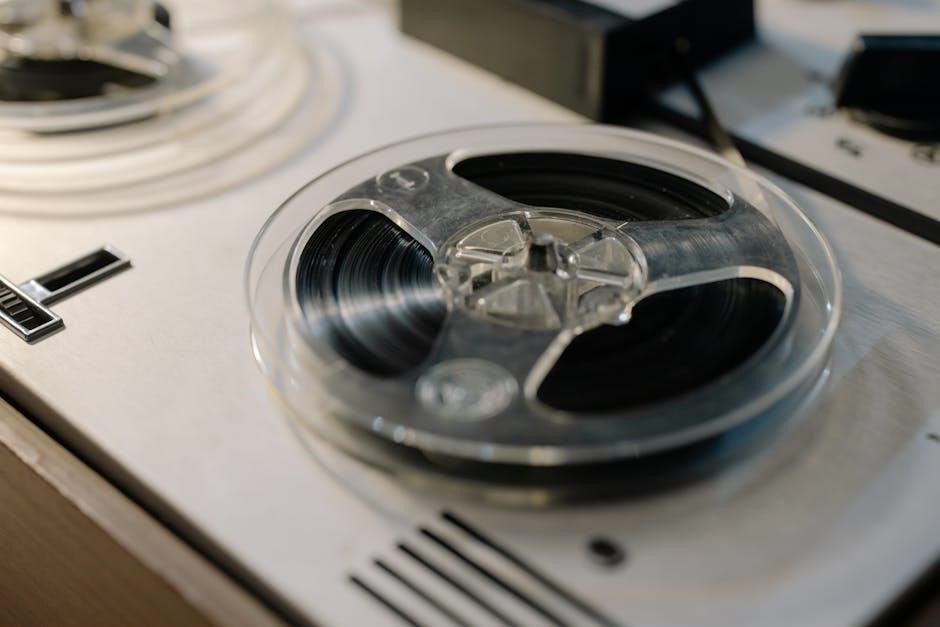The Canon EOS Rebel 2000 is a compact, versatile 35mm SLR camera designed for both beginners and experienced photographers, offering automatic and manual shooting modes.
1.1 Overview of the Camera
The Canon EOS Rebel 2000 is a 35mm SLR camera designed for versatility and ease of use. It features autofocus functionality, compact design, and compatibility with Canon EF lenses. The camera supports fully automatic and manual shooting modes, catering to both amateur and professional photographers. With its intuitive controls and robust feature set, the Rebel 2000 is ideal for capturing a wide range of subjects and situations. The camera’s manual provides detailed guidance on operation, including film loading, exposure settings, and flash usage. This model is part of Canon’s Rebel series, known for balancing performance and accessibility, making it a popular choice for photographers seeking creative control and simplicity.
1.2 Key Features of the Canon EOS Rebel 2000
The Canon EOS Rebel 2000 offers a 3-point autofocus system for precise subject tracking and 10 exposure modes, including automatic and user-controlled settings. It supports auto exposure bracketing and features a built-in flash for added lighting flexibility. The camera is compatible with Canon’s EF lens series, providing versatility in lens selection. Additional features include a compact and lightweight design, making it easy to carry. The Rebel 2000’s manual details these functionalities, ensuring users can maximize the camera’s capabilities. Its combination of advanced features and user-friendly design makes it an excellent choice for photographers seeking both convenience and creative control. The camera’s compatibility with external flash units further enhances its adaptability for various shooting scenarios.
1.3 Importance of the User Manual
The user manual is essential for unlocking the full potential of the Canon EOS Rebel 2000. It provides detailed instructions on operating the camera, including loading film, setting exposure modes, and using the built-in flash. The manual also covers advanced features like auto exposure bracketing and custom functions, helping users optimize their photography skills. Additionally, it offers troubleshooting tips and maintenance advice, ensuring the camera’s longevity. By familiarizing oneself with the manual, photographers can explore creative possibilities and achieve better results. The comprehensive guide is a valuable resource for both beginners and experienced users, making it indispensable for mastering the Rebel 2000’s capabilities and enhancing overall photography experiences.

Key Features of the Canon EOS Rebel 2000
The Canon EOS Rebel 2000 features a 3-point autofocus system, 10 exposure modes, auto exposure bracketing, and compatibility with Canon’s EF lenses, ensuring versatile photography.
2.1 Autofocus System
The Canon EOS Rebel 2000 features a 3-point autofocus system, utilizing TTL (through-the-lens) phase detection for precise and fast focusing. This system excels in various lighting conditions, ensuring sharp images. The camera automatically selects the focus point or allows manual selection for greater control. With One-Shot AF for stationary subjects and AI Servo AF for moving objects, it adapts to different shooting scenarios. The autofocus system also supports predictive focusing, anticipating subject movement for accurate results. Additionally, the Rebel 2000 includes an AF-assist beam via the built-in flash, enhancing focus acquisition in low-light environments. This robust autofocus system makes it versatile for photographers of all skill levels, delivering reliable performance across diverse situations.

2.2 Exposure Modes
The Canon EOS Rebel 2000 offers a variety of exposure modes to cater to different shooting scenarios. These include Program AE (Auto Exposure), Shutter-Priority AE, Aperture-Priority AE, and Manual mode. Program AE provides fully automatic exposure control, ideal for beginners. Shutter-Priority AE allows users to set the shutter speed, while the camera adjusts the aperture. Aperture-Priority AE lets users control the aperture, with the camera adjusting the shutter speed. Manual mode offers full control over both aperture and shutter speed for advanced photographers. Additionally, the camera supports Auto Exposure Bracketing, enabling users to capture multiple exposures of the same scene at different settings, ensuring optimal results in varying lighting conditions. These modes make the Rebel 2000 versatile for photographers of all skill levels.
2.3 Built-in Flash and External Flash Compatibility
The Canon EOS Rebel 2000 features a built-in flash for convenient lighting in low-light conditions. It automatically pops up and fires in Auto mode, with red-eye reduction capability; The flash covers a wide angle and supports manual activation. For advanced lighting, the camera is compatible with Canon’s Speedlite external flash units, such as the 600EX-RT, offering wireless control and TTL metering. Users can attach external flashes via the hot shoe or PC sync socket, enhancing creativity and control. This flexibility allows photographers to achieve professional-grade lighting effects, making the Rebel 2000 adaptable for various shooting scenarios.

Camera Components and Controls
The Canon EOS Rebel 2000 features intuitive controls, including mode dials, buttons, and a viewfinder for easy operation. The camera supports interchangeable EF lenses, ensuring versatility in photography.
3.1 External Controls and Buttons
The Canon EOS Rebel 2000 features a range of external controls designed for easy navigation and quick access to camera functions. The mode dial on top allows selection of shooting modes, including automatic, manual, and scene modes. The shutter button, located on the right-hand grip, enables intuitive control over photo capture. Additional buttons include the AV +/- button for exposure compensation, the ISO button for adjusting sensitivity, and cross-key buttons for menu navigation and autofocus point selection. The LCD panel on the top displays essential settings like aperture, shutter speed, and ISO. These controls are ergonomically placed to enhance shooting efficiency and user experience, ensuring seamless operation for photographers of all skill levels.
3.2 Viewfinder and LCD Display
The Canon EOS Rebel 2000 features a bright, high-eyepoint viewfinder with 90% coverage, making it ideal for precise composition. Inside the viewfinder, you’ll find AF points, exposure compensation, and battery status. The camera also includes a 1.8-inch color LCD screen on the back for reviewing images and accessing menu settings. The LCD displays essential shooting information like aperture, shutter speed, and ISO. A top-mounted LCD panel shows key settings at a glance. The viewfinder’s dioptric adjustment ensures clear visibility for users with corrective lenses. These displays work together to provide intuitive control and feedback, enhancing the overall shooting experience.
3.3 Lens Compatibility
The Canon EOS Rebel 2000 is compatible with Canon EF lenses, offering a wide range of creative possibilities. The camera’s EF mount ensures compatibility with numerous Canon lenses, from standard zooms to specialized primes. This versatility allows photographers to explore various genres, such as portrait, landscape, and sports photography. Additionally, the Rebel 2000 supports other Canon lenses, including EF-S and certain EF-M lenses with an adapter, expanding its versatility further. Proper lens alignment and mounting are crucial for optimal performance. Users are advised to consult the manual or Canon support for lens compatibility verification. This ensures seamless functionality and image quality.

Shooting Modes
The Canon EOS Rebel 2000 offers a variety of shooting modes, including fully automatic, manual, and custom settings, allowing photographers to capture images with precision and creativity.
4.1 Fully Automatic Mode
The Fully Automatic Mode on the Canon EOS Rebel 2000 simplifies photography by automatically adjusting exposure, aperture, shutter speed, and ISO for optimal results. This mode is ideal for beginners or casual shooters who want to focus on composition without manual adjustments. It handles various lighting conditions effectively, ensuring balanced and vibrant images. The camera also automatically activates the built-in flash in low-light situations, making it versatile for everyday photography. Whether capturing portraits, landscapes, or candid moments, the Fully Automatic Mode delivers consistent and reliable performance, allowing users to concentrate on their subjects while the camera manages technical settings seamlessly.
4.2 Manual and Custom Modes
In Manual Mode, the Canon EOS Rebel 2000 offers full control over aperture, shutter speed, and ISO, allowing photographers to customize settings for precise results. Custom Modes enable users to save preferred configurations, accessible via the mode dial, enhancing efficiency in familiar shooting scenarios. This feature is particularly useful for photographers who frequently shoot in specific conditions, such as portraits or landscapes. By leveraging Manual and Custom Modes, users can unlock the camera’s full potential, achieving creative and professional-quality images with ease and consistency.
4.3 Scene Modes
The Canon EOS Rebel 2000 offers a variety of Scene Modes tailored for specific shooting situations, such as Portrait, Landscape, Close-up, Sports, and Night modes. These modes automatically adjust settings like aperture, shutter speed, and ISO to optimize image quality for the selected scenario. Portrait Mode softens backgrounds to emphasize subjects, while Landscape Mode ensures sharp focus across vast scenes. Close-up Mode enhances detail in small objects, and Sports Mode freezes fast-moving subjects. Night Mode captures low-light scenes with minimal noise. These preset modes simplify photography, allowing users to achieve professional-looking results without manual adjustments, making them ideal for beginners or those seeking convenience and versatility in their shooting experience.

Customizing Your Camera Settings
Customize your Canon EOS Rebel 2000 by adjusting ISO, white balance, and exposure bracketing. Personalize button functions to suit your shooting style and preferences for enhanced control.
5.1 Adjusting ISO and White Balance
Adjusting ISO on the Canon EOS Rebel 2000 allows you to control sensitivity to light, with settings from ISO 100 to 1600. Lower ISOs suit bright conditions, while higher ISOs are ideal for low-light situations. White balance settings, such as Auto, Daylight, and Tungsten, help capture accurate colors in various lighting environments. Use the camera’s controls to manually adjust these settings for optimal image quality. Properly setting ISO and white balance ensures your photos are sharp and vibrant, enhancing your overall photography experience.
5.2 Using Auto Exposure Bracketing
Auto Exposure Bracketing (AEB) on the Canon EOS Rebel 2000 allows you to capture three consecutive shots at different exposure levels. This feature is ideal for high-contrast scenes, ensuring detail in both bright and dark areas. To activate AEB, press the exposure compensation button and adjust the dial to select the desired bracketing range (up to +/- 2 stops). The camera will automatically capture three images at the selected intervals. This technique is particularly useful for landscapes or backlit subjects, helping you achieve balanced exposures. AEB enhances flexibility, enabling you to merge images later using HDR software for professional results.
5.3 Customizing Buttons and Functions
The Canon EOS Rebel 2000 allows customization of its buttons and functions to suit your shooting style. Through the Custom Functions menu, you can assign specific tasks to buttons, such as setting exposure compensation or AE lock. This feature enhances efficiency, enabling quick access to frequently used settings. Additionally, the camera permits customization of auto-focus and metering modes, allowing for personalized control over image capture. By tailoring button assignments, photographers can streamline their workflow, making the camera more intuitive and adaptable to various shooting scenarios. This level of customization ensures a more enjoyable and precise photography experience. Use the manual to explore and configure these settings effectively.

Maintenance and Care
Regularly clean the camera and lens to prevent dirt and smudges. Store in a dry, cool place to avoid moisture damage. Periodically check for firmware updates to ensure optimal performance and new features.
6.1 Cleaning the Camera and Lens
Regular cleaning is essential to maintain the performance of your Canon EOS Rebel 2000. Use a soft, dry cloth to wipe the camera body and external controls. For the lens, use a microfiber cloth and avoid applying pressure, which could scratch the glass. Never use alcohol, ammonia, or harsh chemicals, as they may damage lens coatings. Gently remove loose dust from the viewfinder and mirror with a blower. Avoid touching the mirror or internal components. If stubborn smudges persist, consult a professional. Proper cleaning ensures clear images and prevents damage to your equipment. Always store the camera in a protective case when not in use.
6.2 Storing the Camera Properly
Proper storage is crucial to maintain the Canon EOS Rebel 2000’s condition. Store the camera in a cool, dry place, away from direct sunlight and moisture. Use a protective case or bag to shield it from dust and physical damage. Avoid extreme temperatures, as they may affect the camera’s internal components. If storing for an extended period, remove the battery to prevent corrosion. Keep the lens capped when not in use to protect it from dust and scratches. Store the camera and accessories in a well-ventilated area to prevent mold growth. For added protection, consider using silica gel packets to absorb moisture. Always ensure the camera is clean and dry before storing it to prevent damage over time.
6.3 Updating Firmware
Updating the firmware of your Canon EOS Rebel 2000 is essential for optimizing performance and resolving potential issues. Ensure the camera is properly prepared before updating. Visit Canon’s official website to check for the latest firmware version compatible with your camera. Download the update using a computer and transfer it to the camera via a compatible memory card or direct connection. Follow the on-screen instructions carefully to avoid interruptions, as this could damage the camera. After completing the update, restart the camera to apply the changes. Always use Canon-approved software and avoid third-party tools to maintain the camera’s functionality and warranty. Regular updates ensure your camera operates at its best.

Troubleshooting Common Issues
Refer to the manual for common issues resolution. Check battery connections, ensure the lens is clean, and verify settings are correct for optimal performance.
7.1 Resolving Autofocus Issues

The Canon EOS Rebel 2000 features a 3-point autofocus system for precise focusing. If autofocus malfunctions, ensure the lens is clean and free of smudges. Use a soft cloth to gently clean the lens surface and the AF sensor. Check that the AF/MF switch on the lens is set to AF mode. If issues persist, try resetting the camera to its default settings or refer to the manual for advanced troubleshooting steps. Regular maintenance and proper handling can prevent autofocus problems, ensuring sharp and clear images every time you shoot.
7.2 Fixing Exposure Problems
If your Canon EOS Rebel 2000 is experiencing exposure issues, start by checking the built-in light meter for accurate readings. Ensure the aperture, shutter speed, and ISO settings are appropriately adjusted for the lighting conditions. Overexposed images may require a smaller aperture or faster shutter speed, while underexposed images might need the opposite. Utilize the Auto Exposure Bracketing feature to capture a range of exposures and select the best result. If problems persist, verify that the lens is clean and free of obstructions. Resetting the camera to default settings can also resolve unexpected exposure errors. Refer to the manual for detailed guidance on exposure control and customization.
7.3 Solving Flash Malfunctions
If the built-in flash or external flash on your Canon EOS Rebel 2000 is malfunctioning, start by ensuring the flash is enabled and properly raised. Check that the flash setting is not set to “Silent” mode or “Disabled;” Verify the Red-Eye Reduction feature is turned off, as it may interfere with flash firing. For external flashes, ensure compatibility with the Canon EOS Rebel 2000, such as the Canon Speedlite series. Clean the hot shoe connection and confirm the external flash is powered on. If issues persist, replace the batteries or reset the camera to default settings. Consult the user manual for specific troubleshooting steps or contact Canon support for further assistance.

Accessories for the Canon EOS Rebel 2000
Enhance your photography experience with compatible accessories like EF lenses, external Speedlite flashes, and sturdy tripods, expanding the camera’s functionality and versatility for diverse shooting needs.
8.1 Compatible Lenses
The Canon EOS Rebel 2000 is compatible with a wide range of Canon EF lenses, offering versatility for various photography needs. From the EF 28-300mm f/3.5-5.6L IS USM to other EF-series lenses, users can achieve high-quality images with precise autofocus and excellent optical performance. These lenses are designed to work seamlessly with the camera’s autofocus and metering systems, ensuring optimal results. Whether capturing portraits, landscapes, or close-ups, the EF lens lineup provides the flexibility to explore different creative possibilities. Always choose lenses that match your photography style and needs for the best results with the Rebel 2000.
8.2 External Flash Units
The Canon EOS Rebel 2000 supports external flash units, such as the Canon Speedlite 600EX-RT and 600EX, which enhance lighting control and creativity. These flashes offer advanced features like wireless operation, high-speed sync, and bounce capabilities, ideal for professional results. They integrate seamlessly with the camera’s functions, providing consistent and precise lighting. Using an external flash unit allows photographers to reduce harsh shadows, achieve better illumination in low-light conditions, and experiment with creative lighting setups. Ensuring compatibility with the Rebel 2000, these flashes are essential tools for capturing high-quality images with improved dynamic range and depth. Always use Canon-approved accessories for optimal performance and reliability.
8.3 Tripods and Other Accessories
Using a tripod with the Canon EOS Rebel 2000 ensures stability and sharp images, especially in low-light conditions or when using slower shutter speeds. Choose a sturdy, compatible tripod that supports the camera’s weight. Additional accessories like remote shutter releases, lens cleaning kits, and camera bags are also recommended to enhance your photography experience. These tools help protect your equipment and improve shooting convenience. For optimal performance, always use Canon-approved accessories or compatible third-party products. Tripods and other accessories are essential for capturing professional-quality photos and maintaining your camera’s longevity. They provide the support and versatility needed for diverse shooting scenarios.
The Canon EOS Rebel 2000 offers versatility and quality, making it ideal for photographers of all levels. Explore its features and keep learning for optimal results.
9.1 Summary of Key Features
The Canon EOS Rebel 2000 is a feature-rich camera offering a 3-point autofocus system for precise focus control, 10 exposure modes for versatility, and auto exposure bracketing to capture perfect lighting. It supports Canon EF lenses, providing flexibility for various photography needs. The camera also includes built-in flash and compatibility with external flash units, enhancing low-light performance. Its compact design and intuitive controls make it accessible for beginners while offering advanced features for experienced photographers. These features collectively ensure high-quality images and a seamless shooting experience, catering to a wide range of photographic scenarios and user skill levels.
9.2 Final Tips for Optimal Use
To maximize your experience with the Canon EOS Rebel 2000, familiarize yourself with its autofocus system and exposure modes for precise control. Experiment with auto exposure bracketing to capture ideal lighting in challenging conditions. Regularly clean the lens and camera body to maintain image quality, and store the camera in a dry, cool place to prevent damage. For optimal performance, use genuine Canon accessories like EF lenses and external flash units. Updating firmware ensures you have the latest features and improvements. Lastly, refer to the user manual for troubleshooting common issues and explore Canon’s official resources for advanced techniques and tips.
9.3 Resources for Further Learning
For deeper understanding and mastery of the Canon EOS Rebel 2000, explore official Canon resources, including the EOS Rebel 2000 instruction manual available for free download. Visit Canon’s official website for tutorials, firmware updates, and accessory guides. Join Canon’s forums and communities to connect with photographers and gain insights. Additionally, check out Canon-authorized retailers for workshops or online courses. Utilize YouTube tutorials dedicated to the EOS Rebel series for practical tips. Lastly, download the Canon EOS Webcam Utility for expanded functionality. These resources will help you unlock the full potential of your camera and enhance your photography skills.
